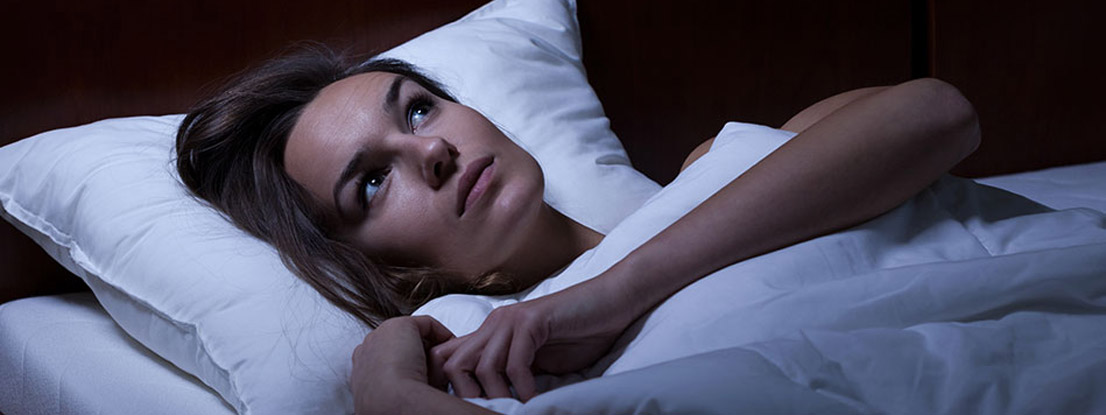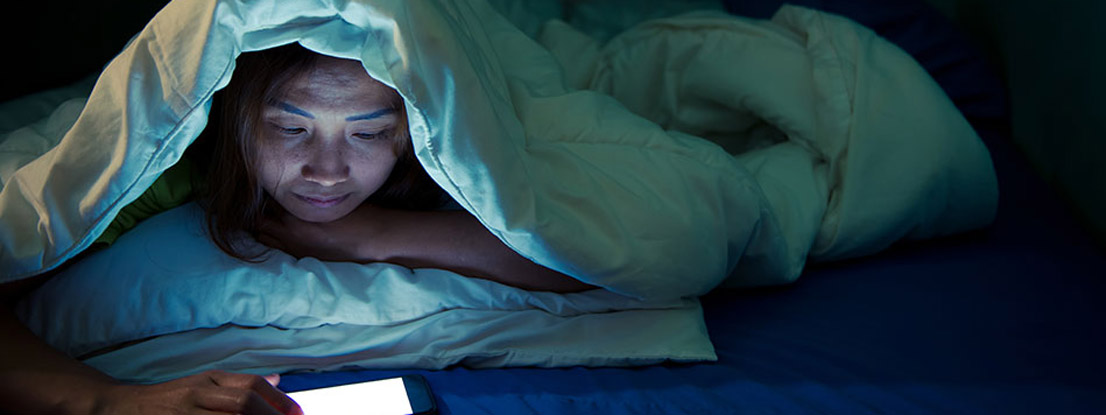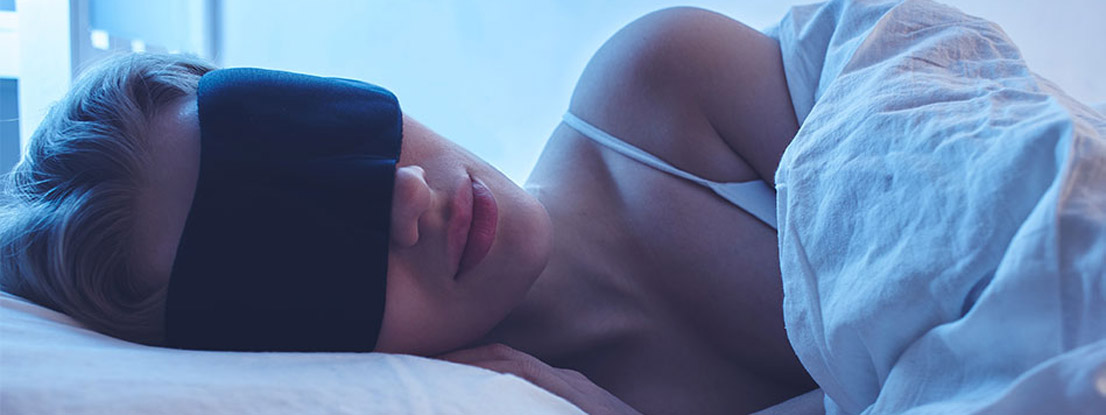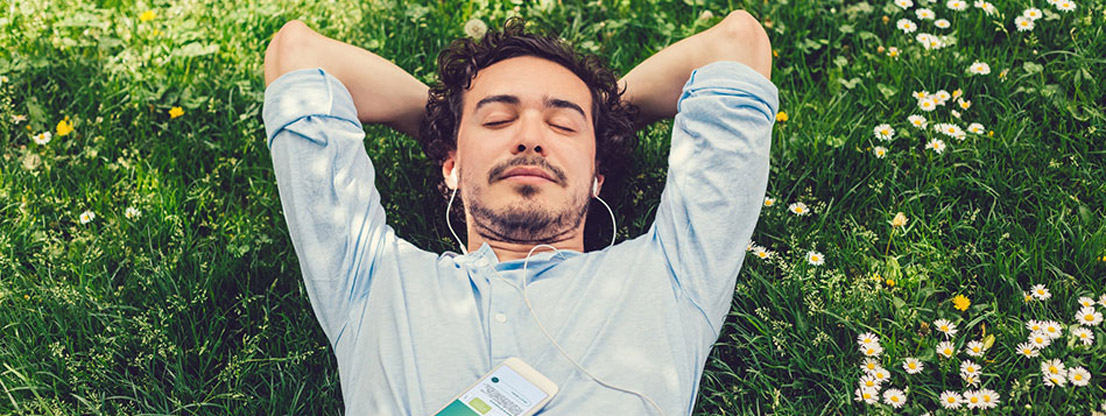Falling asleep: difficult or easy?
Everybody knows this situation: You lie down in bed in the evening and just can’t get to rest. Your thoughts revolve around certain topics that have moved you emotionally throughout the day. The later it gets, the more restless you become, because you have to be rested and fit the next day. And suddenly you find yourself in a negative control cycle from which it is difficult to break out. Because to relax compulsively does not work. Falling asleep basically means letting go – but what is the best way to bring yourself down?
1. Test yourself

In this article you will find some helpful tips on how to fall asleep better in the evening. For the first time, you should feel your own “sleeping teeth” and find out where your problems with falling asleep come from. This is the only way to find out the right frequency therapy or method for you.
Sleep deprivation due to difficulty in falling asleep
In our society, insomnia is not yet generally recognized as a problem. But nevertheless 35% of the employed persons indicate for example in a mirror on-line inquiry that they suffer at least three times per week in a period of 4 weeks from sleep disturbances. And who does not know this: The days after that are tough, long, exhausting and gruelling. Do you really need something like this on twelve working days a month? [1]
Evolution speaks along – innate instincts
In fact, you first have to learn how to fall asleep deeply and relaxedly as a small child. In evolutionary terms, babies and toddlers have a very superficial sleep when they are alone in a room. This dates back to prehistoric times, to the Stone Age to be precise. At that time, the environment in which we sleep played a very important role. For example, people could be attacked by wild animals in their cave. Sleeping too deeply sometimes meant not being able to see the next morning.
Design your bedroom according to your feel-good factor
So find out what makes a calming room for you and design your bedroom accordingly. Often colours have different effects on the mood or the orientation of the furniture. Too many things, bits and pieces and junk can seem chaotic to us. Clear lines and order are more reassuring. It is also important to have a good place to sleep, the right mattress, a good grate where you don’t “sag” and fresh, soft bedding. All this increases the comfort. And that in turn leads to more relaxation.
2. Better falling asleep in everyday life through “Brain Detox“

Avoid sleep raiders
In everyday life we encounter countless factors that consciously or unconsciously prevent us from coming to rest. Here are a few tips to help you calm down yourself before going to bed.
Don’t be permanently online
There is hardly an area of life anymore where you don’t have to use screens. We are all a little vulnerable to the digital revolution. You surf on your smartphone, watch movies on your TV or computer monitor and answer your e-mails on your tablet. And you feel this – and if possible – preferably 24 hours a day. But researchers recommend refraining from any screen-related media consumption one hour before going to bed [3].
Avoid artificial lighting with high blue content
The artificial light emitted by your smartphone prevents your body from resting. So it’s best to put away all technical equipment early and don’t take it into the bedroom in the first place. If you can’t stand to be without them, most modern mobile phones and tablets now have a “night-shift” function that filters out the blue component of the light on the screen of your device. So: either enjoy a good book or magazine in a good old print version or use the latest technologies [3].
Don’t let yourself be captivated by technology
Not only the light disturbs your sleep. The fascination of media content also makes you move much less. As a result, your body lacks the necessary workload and in the evening it is not tired enough to takethe rest you need to fall asleep. For this reason, it is better to structure your day well and plan fixed activity breaks. If you have been working on the computer for a while, you can grab yourself, your dog, a friend or whatever you like and go for a walk. After 30 minutes of exercise in the fresh air, a positive and serotonin-promoting effect will occur.
Don’t work over your limit and relax before sleeping
Make a work plan that specifies exactly when your productive phases begin and when they end. This will give you a satisfying end to the day and you can spend the rest of the time on quieter things. Also try not to think about anything until shortly before going to bed. If you still want to do something cognitive, you can read a book or draw something, for example. Creativity promotes inner balance and gives us relaxation.
3. Quick assistants for a successful sleep

Neurologists see red – because this colour makes us tired
Blue light is bad for falling asleep, because high blue components in the light tell our body that the morning twilight is coming. It prevents our brain from releasing the sleep hormone melatonin. This is essential for us to be able to fall asleep at all. To stimulate the production of melatonin, the body needs light in the red spectral range. For this purpose, it is sufficient to turn on a red light lamp. Because it is often more relaxing not to put yourself under “pressure to fall asleep” by complete darkness.
Devices that promote falling asleep and analyse sleep behaviour
There are also special devices that will keep your bedroom light and sleepy and provide the right sound. These emit fatigue-inducing sounds developed by neurologists. You can also set these devices to change from red to blue light at a certain time of day. In this way, your brain stops producing melatonin and you wake up. [6]
Easy sleep through heavy blanket
There are special blankets that are much heavier than the usual ones. For adults, the recommended value of these duvets is between 7 and 14 kilograms. When you cover yourself with such a blanket, the slight pressure of the weight stimulates your body to produce serotonin, which in turn is converted into melatonin. This phenomenon can be well observed when using therapy dogs, for example: If their owner has a panic attack, they climb onto his lap and stay there until the person calms down again. This usually happens relatively quickly because the body reacts to the dog’s weight and heat accordingly.[7]
4. Outsmart your restlessness

Here you will find a few simple techniques that will make you calm down. For two of them you need nothing – except you and your body.
With conscious tension for relief: Progressive muscle relaxation
The American physiologist Edmund Jacobson discovered almost 100 years ago that targeted muscle relaxation can lead to a reduction in anxiety and stress. This has led to the development of progressive muscle relaxation. It is used in various forms of therapy. But you can also do it in a simple version at home: To do this, you simply look for a comfortable place to sit or lie down. In this case, it is best to start with your feet and tense the different muscle groups one after the other, feel into them briefly and then let go again. In this way you can slow down your blood pressure, pulse rate and breathing [4].
Conscious breathing: Breathe away the insomnia
You can consciously influence your breathing. You should breathe in very deeply and slowly into your stomach – and slowly out again. That is not so easy. The best way to check is to place your hand on your stomach. Breathing is a very important factor when you fall asleep and you can control it quite easily. By breathing in a controlled way, you slow down, just as you would if you were to slow down when you were driving [5]
5. Do guided sleep meditations – also occasionally at midday
Give up control – the sonamedicr frequency therapies take care of you
The promising thing about this kind of relaxation is that you give up control and can enjoy a gentle and lovingly guided meditation. You no longer revolve around your own thoughts, but concentrate on the sound setting and optionally on the voice of the speaker, who provides you with wonderful positive suggestions and meditative fantasy journeys.
Use the power of your imagination with guided meditations
Through the guided sound journeys with powerful images you centre yourself. Your power of imagination will be activated, your thinking processes will be shut down – because you can’t have both together. Or can you imagine intensively and brood at the same time? Take the freedom and unfold your own powerful world in your mind, which will accompany you through your everyday life.
Make yourself comfortable, relax and fall asleep
Let our sound journeys take you down within ten minutes and vibrate you into the right brain wave frequency. Calm your mind with a relaxed focus on inner beautiful images and let our audio programmes carry you away. You don’t have to do much: Just choose the right sleep programme for you and lie down in your bed. Take your headphones and plug them into your left and right ear. Relax and let yourself drift. We are happy to help you fall asleep better – stress-free, without pondering and relaxed with all your senses!
Scientific sources
(1) Deutschland schläft schlecht. Fehlende Nachtruhe. Spiegel Online (Zugriff 23.Mai 2019)
(2) Brisch, Karl Heinz: Einschlafen lernen, in: Deutsche Hebammen Zeitschrift. H3, 2011, S. 54 – 56.
(3) Digitale Medien und Schlafqualität auf BARMER Online (Zugriff 24.Mai 2019)
(4) Neurologen und Psychiater im Netz: Progressive Muskelentspannung Online (Zugriff 23.Mai 2019)
(5) Entspannungstechniken für einen gesunden Schlaf. Mit ruhigem Atem entspannt in den Schlaf. meine-gesundheit.de Online (Zugriff 24.Mai 2019)
(6) Das große Geschäft mit den Schlaflosen. Gadgets gegen (Ein-)Schlafstörungen. handelsblatt.com Online (Zugriff 24. Mai 2019)
(7) Scott, Jyssica: Weighted Blanket for Anxiety and Insomnia: How to make it Work. Online (Zugriff 24. Mai 2019)




